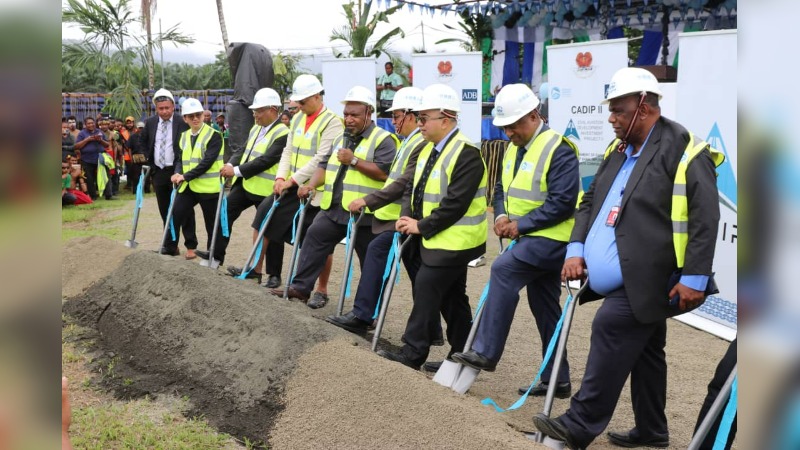Prime Minister (PM) James Marape recently lauded the National Airports Corporation (NAC) and the Civil Aviation Development Investment Project (CADIP) for their significant role in the planned construction of the new K76.8 million Gurney Airport in Alotau, Milne Bay Province.
He expressed his commendations during the groundbreaking ceremony held in Alotau, highlighting the initiative as a crucial component of the Government’s Connect PNG initiative.
The upgrade of provincial airport terminals under CADIP, which is being carried out in collaboration with the Asian Development Bank (ADB), represents a strategic component of the country’s infrastructure development aimed at boosting economic growth and tourism.
Since its inception in 2010 with CADIP1, the project has facilitated the enhancement of numerous airports across the country, resulting in investments totalling K1.6 billion.
The project, which is expected to be completed in 26 months, aims to improve travel times, cargo and passenger handling services, and overall travel facilities.
This initiative not only helps to improve operational efficiencies, but it also promotes regional economic growth and tourism development.
Minister Marape extended his gratitude to the ADB for their enduring support and underscored the importance of infrastructure in improving the livelihoods of Papua New Guineans.
“Upgrading airport terminals, enhancing safety and security, and generating job opportunities are pivotal for the holistic development of the region.”
He also mentioned the promising prospects for tourism in Milne Bay and urged local leaders to prioritize this sector.
The collaboration between the NAC, various investors, and the ADB demonstrates a shared commitment to improving transportation and connectivity in Papua New Guinea.
Alotau’s Gurney Airport is proud to be the first recipient of the second phase of CADIP, known as CADIP 2.
“The diligent efforts by our investors compel us to rise to the occasion, ensuring we match their commitment to delivering 21st century infrastructure.”

